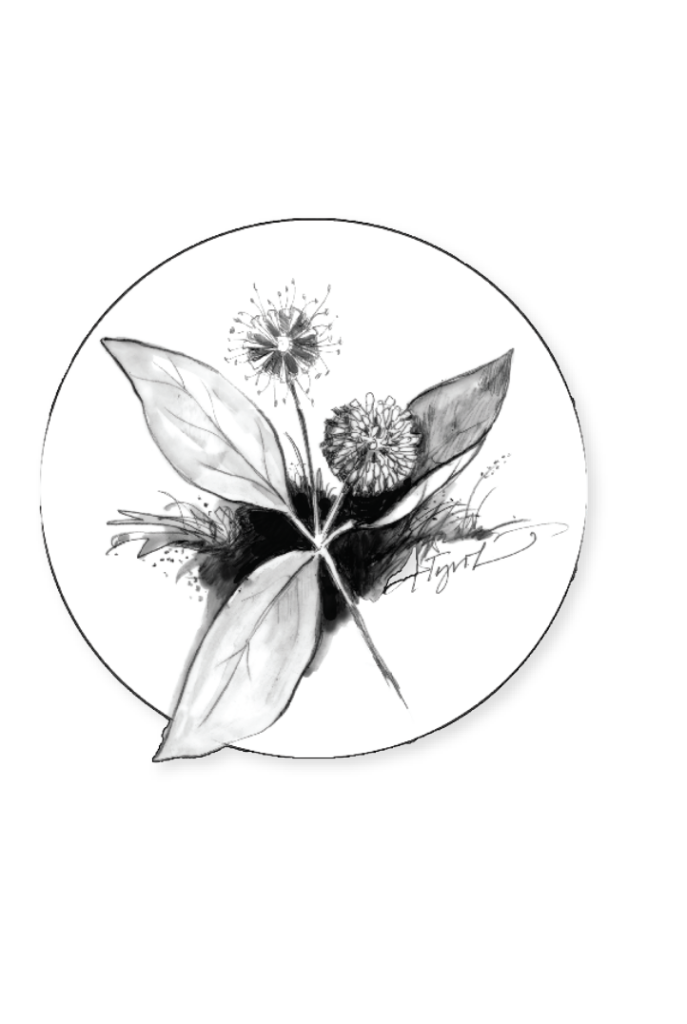
As autumn begins and insect populations dwindle, many waterfowl species rely increasingly on seeds as a food source. Common buttonbush (Cephalanthus occidentalis), with its spherical bouquets of seeds now ripening, provides food for an array of ducks, geese, and other wetland denizens.
Buttonbush’s range spans southern Canada to Florida and from the Atlantic coast to the Midwest. This deciduous, water-loving native shrub, a distant relative of coffee, colonizes wet areas, including along waterways, at lake and pond edges, and in moist forest understories. Other folk names include “crane-willow” and “river-bush.”
At least a dozen species feed on the shrub’s seeds, including wood ducks, mallards, pintails, teals, and gadwalls. The secretive American bittern also noshes on buttonbush’s bounty. Each seedhead can contain up to 400 individual seeds, or “nutlets,” and waterfowl gobble these from the water’s surface once they are dislodged by wind or disturbance.
The autumn seeds are only one dimension of buttonbush’s wildlife value. From mid- to late summer, the shrub offers a feast to pollinators. The eponymous “buttons” are globular, fragrant collections of small, cream-colored flowers that sit at the branch ends. A long, delicate style juts from each flower, giving the buttons a pin-cushion-like appearance. Multiple species of butterflies, including Eastern Tiger and black swallowtail, frequent the inflorescences. Bumblebees, smaller native bees, and beneficial wasps flock to buttonbush flowers for their pollen and nectar, as does the ruby-throated hummingbird.
Buttonbush also hosts several songbird species: red-winged blackbirds, alder flycatchers, and song sparrows nest in its branches, and buttonbush thickets provide shore cover and shade for waterfowl. White-tailed deer and beavers will nibble the leaves and twigs. The foliage hosts the larvae of several large moth species, including the royal walnut moth, the hydrangea sphinx, and the titan sphinx. Humans, meanwhile, have used buttonbush’s bark as a quinine substitute to treat malaria.
At the landscape level, buttonbush is a critical species for riparian ecosystems. More than just tolerating standing water, buttonbush thrives in it. Shrubs can grow in areas submerged in up to 4 feet of water. Its fondness for consistently wet soils renders it an effective erosion-control species that can stabilize eroded riverbanks and pond and lake shores. (The consequence of buttonbush’s affinity for waterlogged or submerged soils, however, is its poor drought tolerance.) Once established, buttonbush will form thickets via rhizomes. And, importantly for disturbed or rewilding sites, buttonbush is gritty; according to the Wild Seed Project of Maine, Henry David Thoreau once observed a flotilla of buttonbush, displaced by flooding on Massachusetts’ Sudbury River, that eventually reestablished itself at a different spot downstream.
My first encounter with buttonbush came in one of its preferred habitats: at the edge of a local pond. I spotted a large shrub about four or five feet tall growing from the shallows. It was in full mid-July bloom, vibrating with pollinators. Bumblebees, wasps, and skippers buzzed around each button, jockeying for real estate. Dazzled by the life supported by the plant, I soon acquired two young buttonbushes for an area of standing water in my backyard that has killed some of the hardiest native perennials and shrubs of the Northeast. The two plants weathered this summer’s interminable waves of moisture and months of standing water with ease. They flaunted a pageant of blooms even showier than last season’s brilliance. A variety of bees, butterflies, and beetles all clamored to the white buttons as soon as they opened.
Now, with the days shortening and cooler temperatures creeping in, buttonbush seeds are ripening and will soon be ready for hungry beaks.
Colby Galliher is a writer who calls the woods, meadows, and rivers of New England home. To learn more about his work, visit colbygalliher.com. Illustration by Adelaide Murphy Tyrol. The Outside Story is assigned and edited by Northern Woodlands magazine and sponsored by the Wellborn Ecology Fund of the New Hampshire Charitable Foundation: nhcf.org.




